Intro
Discover 5 ways CT scanners revolutionize medical imaging, enhancing diagnostic accuracy with high-resolution scans, low-dose radiation, and advanced imaging techniques.
The importance of medical imaging in healthcare cannot be overstated. One of the most crucial diagnostic tools in this field is the CT scanner, which has revolutionized the way doctors diagnose and treat various medical conditions. CT scanners, or computed tomography scanners, use X-rays and computer technology to produce detailed cross-sectional images of the body. These images allow healthcare professionals to visualize internal structures and identify potential health issues. The impact of CT scanners on patient care and outcomes has been significant, making them an indispensable part of modern medicine.
CT scanners have come a long way since their introduction, with advancements in technology leading to improved image quality, reduced radiation exposure, and increased versatility. Today, CT scanners are used in a wide range of applications, from diagnosing injuries and diseases to guiding minimally invasive procedures. The ability of CT scanners to provide high-resolution images of internal structures has made them particularly useful in emergency medicine, where quick and accurate diagnoses are critical. Furthermore, the development of new technologies, such as high-speed scanners and advanced image reconstruction algorithms, continues to expand the capabilities of CT scanners, enabling healthcare professionals to detect and treat medical conditions more effectively.
The benefits of CT scanners extend beyond their diagnostic capabilities. They also play a crucial role in patient management, allowing healthcare professionals to monitor the progression of diseases and the effectiveness of treatments. For example, CT scanners can be used to track the growth of tumors, assess the extent of vascular disease, and evaluate the integrity of bones and joints. The detailed images provided by CT scanners enable doctors to make informed decisions about patient care, reducing the need for invasive procedures and improving health outcomes. As medical technology continues to evolve, the role of CT scanners in healthcare is likely to become even more prominent, driving innovations in diagnosis, treatment, and patient care.
Introduction to CT Scanners
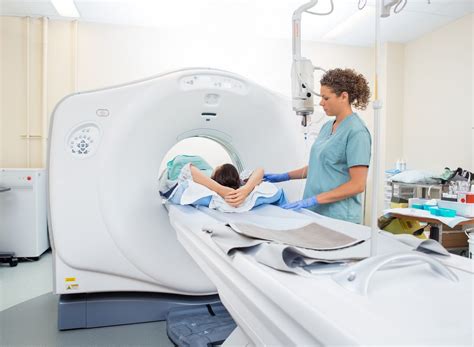
CT scanners work by rotating an X-ray source and detector around the body, capturing multiple images from different angles. These images are then reconstructed into detailed cross-sectional views using computer algorithms. The resulting images can be displayed in various formats, including axial, sagittal, and coronal views, allowing healthcare professionals to visualize internal structures from different perspectives. The process of scanning is typically quick and painless, with most exams taking only a few minutes to complete. However, the preparation time may vary depending on the type of exam and the patient's condition.
How CT Scanners Work
CT scanners consist of several key components, including the X-ray source, detector, and computer system. The X-ray source produces a beam of X-rays that passes through the body, while the detector captures the X-rays that are not absorbed by the body. The computer system reconstructs the images using the data from the detector, applying algorithms to correct for artifacts and enhance image quality. The resulting images are then displayed on a monitor, allowing healthcare professionals to interpret the results and make diagnoses.Benefits of CT Scanners
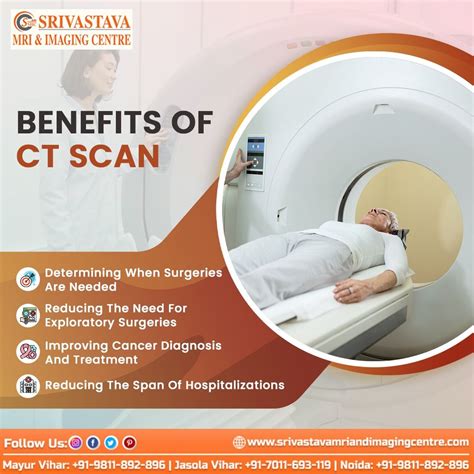
The benefits of CT scanners are numerous, including improved diagnostic accuracy, reduced radiation exposure, and increased patient comfort. CT scanners can detect a wide range of medical conditions, from injuries and infections to cancers and vascular diseases. They can also guide minimally invasive procedures, such as biopsies and drainages, reducing the need for open surgery. Additionally, CT scanners can help healthcare professionals monitor the progression of diseases and the effectiveness of treatments, enabling them to make informed decisions about patient care.
Applications of CT Scanners
CT scanners have a wide range of applications in medicine, including: * Diagnosing injuries and diseases * Guiding minimally invasive procedures * Monitoring the progression of diseases * Evaluating the effectiveness of treatments * Detecting cancers and vascular diseases CT scanners can also be used in emergency medicine, where quick and accurate diagnoses are critical. They can help healthcare professionals diagnose conditions such as strokes, heart attacks, and traumatic injuries, enabling them to provide timely and effective treatment.Types of CT Scanners
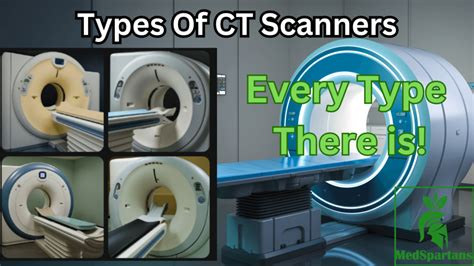
There are several types of CT scanners, including conventional CT scanners, high-speed CT scanners, and dual-source CT scanners. Conventional CT scanners use a single X-ray source and detector to capture images, while high-speed CT scanners use multiple X-ray sources and detectors to capture images more quickly. Dual-source CT scanners use two X-ray sources and detectors to capture images, enabling them to detect a wider range of medical conditions.
Advantages of High-Speed CT Scanners
High-speed CT scanners have several advantages over conventional CT scanners, including: * Faster scanning times * Higher image resolution * Reduced radiation exposure * Improved patient comfort High-speed CT scanners can capture images more quickly, reducing the need for sedation and anesthesia. They can also detect a wider range of medical conditions, enabling healthcare professionals to make more accurate diagnoses.CT Scanner Technology
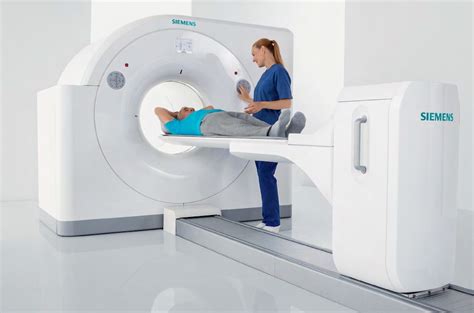
CT scanner technology is constantly evolving, with advancements in X-ray sources, detectors, and computer systems. New technologies, such as artificial intelligence and machine learning, are being developed to improve image quality and reduce radiation exposure. Additionally, the development of new reconstruction algorithms and image processing techniques is enabling healthcare professionals to detect a wider range of medical conditions.
Future of CT Scanners
The future of CT scanners is likely to be shaped by advancements in technology, including the development of new X-ray sources, detectors, and computer systems. Additionally, the integration of artificial intelligence and machine learning into CT scanners is likely to improve image quality and reduce radiation exposure. As CT scanner technology continues to evolve, healthcare professionals can expect to see improved diagnostic accuracy, reduced radiation exposure, and increased patient comfort.CT Scanner Safety
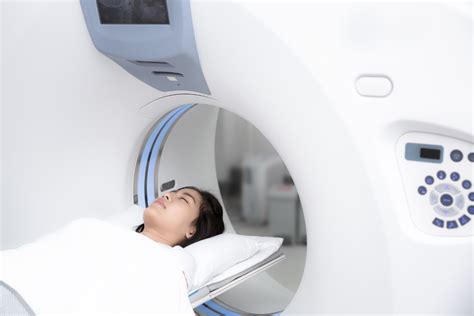
CT scanner safety is a critical concern, as CT scanners use X-rays to capture images. However, the risks associated with CT scanners can be minimized by following proper safety protocols, including:
- Using the lowest possible dose of radiation
- Ensuring that patients are properly positioned and prepared for the exam
- Using shielding to protect sensitive areas
- Monitoring patients for adverse reactions
Risks Associated with CT Scanners
The risks associated with CT scanners include: * Radiation exposure * Allergic reactions to contrast agents * Adverse reactions to sedation and anesthesia * Claustrophobia and anxiety However, these risks can be minimized by following proper safety protocols and using CT scanners judiciously.CT Scanner Maintenance
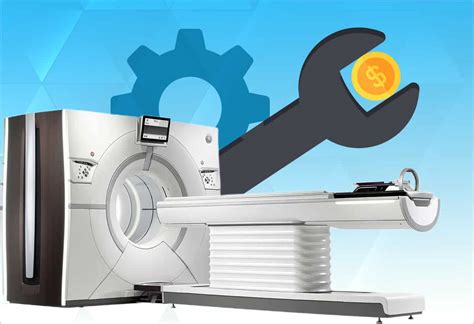
CT scanner maintenance is critical to ensuring that CT scanners function properly and provide high-quality images. Regular maintenance tasks, including:
- Cleaning and calibrating the CT scanner
- Updating software and firmware
- Performing quality control checks
- Replacing worn or damaged parts can help extend the lifespan of the CT scanner and ensure that it continues to provide accurate and reliable images.
Importance of Regular Maintenance
Regular maintenance is essential to ensuring that CT scanners function properly and provide high-quality images. Neglecting maintenance tasks can lead to: * Reduced image quality * Increased downtime * Increased costs * Reduced patient safety Therefore, it is critical to perform regular maintenance tasks to ensure that CT scanners continue to provide accurate and reliable images.What is a CT scanner?
+A CT scanner is a medical imaging device that uses X-rays and computer technology to produce detailed cross-sectional images of the body.
How do CT scanners work?
+CT scanners work by rotating an X-ray source and detector around the body, capturing multiple images from different angles. These images are then reconstructed into detailed cross-sectional views using computer algorithms.
What are the benefits of CT scanners?
+The benefits of CT scanners include improved diagnostic accuracy, reduced radiation exposure, and increased patient comfort. CT scanners can detect a wide range of medical conditions, from injuries and infections to cancers and vascular diseases.
In conclusion, CT scanners are a crucial diagnostic tool in modern medicine, providing healthcare professionals with detailed images of internal structures and enabling them to make informed decisions about patient care. As CT scanner technology continues to evolve, we can expect to see improved diagnostic accuracy, reduced radiation exposure, and increased patient comfort. Whether you are a healthcare professional or a patient, understanding the benefits and limitations of CT scanners is essential to making informed decisions about medical imaging. We invite you to share your thoughts and experiences with CT scanners in the comments below, and to explore the many resources available to learn more about this important medical technology.
